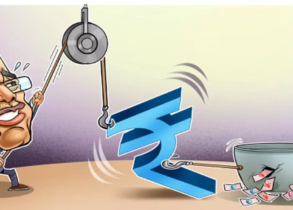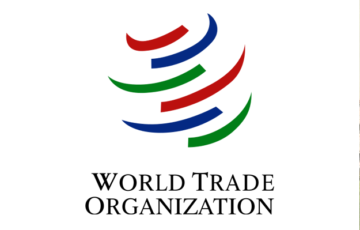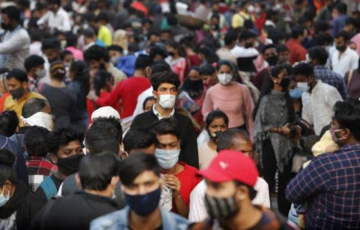EXTERNAL SECTOR
Introduction
- The external sector of an economy encompasses all economic activities that involve foreign currency transactions.
- Export-import activities, which are the trade of goods and services across international borders.
- Foreign investment, including direct investments in business operations and portfolio investments in financial assets.
- External debt, which refers to borrowing from foreign lenders.
- Current and capital accounts, which are part of a country’s balance of payments, detailing the flow of goods, services, financial assets, and transfers.
- Balance of payments, a comprehensive record of all economic transactions between the residents of a country and the rest of the world.
Open Economy
- An open economy engages in trade of goods, services, and financial assets with other countries.
Benefits of open economy
- Open market: Allows for the import and export of goods and services, increasing competition and offering consumers a wider choice of products.
- Financial market: Provides opportunities for investment in both domestic and foreign assets, facilitating capital flow and investment diversification.
- Labor market: Offers firms flexibility in choosing the location of their operations and provides workers with opportunities to work in different countries, although this is regulated by immigration laws to manage the flow of labor.
The main advantage of an open economy is its ability to establish linkages with the global market, which is not feasible in a closed economy setup. These linkages can lead to enhanced economic growth, technological advancements, and improved standards of living.
Closed Economy
- A closed economy, in contrast, does not engage in international trade or financial exchanges.
key characteristics
- No imports or exports: All goods and services consumed within the country are produced domestically.
- Self-sufficiency goal: Aims to provide everything the domestic market needs from within its own borders.
While closed economies aim for complete independence from global markets, in today’s interconnected world, they are largely theoretical. Some countries may have more restrictions than others, but complete isolation is nearly impossible due to the benefits of global trade and the need for certain imports.
Comparative Advantages and Economic Growth
- Comparative advantages: Open economies can specialize in producing goods and services for which they have a comparative advantage, trading surplus for needed imports, thereby optimizing global resource use.
- Economic growth: Historical data shows that relatively open economies tend to grow faster than closed ones due to access to larger markets, technology, and investment.
Protectionism
While open economies bring many benefits, they can also implement protectionist policies to shield domestic industries from foreign competition. This could be through tariffs, quotas, or outright bans on certain imports. Protectionism can safeguard jobs and industries but may also lead to inefficiencies and higher costs for consumers.
The Balance of Payments (BoP)
The Balance of Payments (BoP) is a comprehensive record of all economic transactions between the residents of a country and the rest of the world during a specific time period, usually a year. It is a vital indicator of an economy’s financial and economic status and includes three main components: the Current Account, the Capital Account, and the Financial Account. The BoP helps in understanding whether a country is in a surplus or a deficit, which has implications for its economic stability and policy making.
Current Account
The Current Account records the trade in goods and services, along with transfer payments. This includes:
- Trade in goods (Net visible): This involves exports and imports of goods. Exports are beneficial as they increase sales and profits for domestic producers, while imports are goods produced abroad and purchased by the domestic economy.
- Trade in services (Net invisibles): This covers services like shipping, banking, insurance, tourism, and software services. It also includes net factor income, which is the difference between what a country earns from its investments abroad and what foreigners earn from their investments in the country.
- Transfer payments: These are one-way payments, such as remittances from abroad or international aid, for which no goods or services are exchanged in return.
A current account surplus indicates that a country is a net lender to the rest of the world, while a deficit indicates that it is a net borrower.
Capital Account
The Capital Account records transactions in financial instruments and changes in foreign ownership of assets. This can include investments in property, factories, and stocks and bonds. A surplus in the capital account means the country is importing capital (i.e., receiving investments from abroad), while a deficit means it is exporting capital (i.e., investing abroad).
- Financial Account (as per revised IMF standards)
The Financial Account tracks changes in domestic ownership of foreign assets and foreign ownership of domestic assets, including investments in foreign securities, direct investment abroad, and foreign direct investment in the domestic economy. It is closely related to the Capital Account but focuses more on financial assets and liabilities.
BoP Surplus and Deficit
A BoP surplus occurs when the sum of the current and capital (and financial, according to revised standards) accounts is positive, indicating that a country is receiving more from the rest of the world than it is spending. Conversely, a deficit occurs when this sum is negative, indicating that the country is spending more abroad than it is earning from its international transactions.
Managing a BoP Deficit
To manage a deficit, a country can use its foreign exchange reserves, borrow from international lenders, or implement policies to reduce imports and increase exports. Persistent deficits might indicate underlying economic problems, such as a lack of competitiveness or excessive domestic consumption, and require structural reforms.
Significance of the BoP
The BoP is crucial for policymakers as it provides insights into the country’s economic standing, its ability to repay foreign debt, and the effectiveness of its economic policies. A balanced or surplus BoP is generally desirable as it suggests economic stability and strength, while a deficit may indicate vulnerabilities, especially if it persists over time.
INDIA’S BOP CRISIS IN 1991
Features of the 1991 BoP Crisis
- Severe Forex Shortage: India’s foreign exchange reserves had dwindled to a point where they could barely cover three weeks of imports, and the country was on the verge of defaulting on its external debt obligations.
- Government Instability: The inability of the government to pass the budget in February 1991 exacerbated the situation, damaging India’s international credibility.
- Credit Crunch: India faced a severe liquidity crisis, with even short-term loans becoming inaccessible as confidence among international lenders eroded.
- Mortgaging Gold Reserves: The situation reached a nadir when the World Bank and the IMF refused to extend further loans, forcing India to mortgage its gold reserves to secure the necessary funds.
Causes of the Crisis
- Fiscal Deficit: The government’s expenditures far outstripped its income, leading to a significant increase in the gross fiscal deficit from 9% in 1980-81 to 12.7% in 1990-91.
- Increased Internal Debt: The government’s internal debt surged from 35% in 1985-86 to 51% in 1990-91, indicating a reliance on borrowing to finance its deficit.
- Twin Deficits: India faced a twin deficit problem, with both trade and fiscal deficits ballooning, exacerbated by a depreciating rupee and low foreign exchange reserves.
- Current Account Deficit: A large current account deficit was fueled by excessive imports over exports, further strained by the spike in oil prices due to the Gulf War.
- Investor Withdrawal: The risk of government default led to investors pulling out their funds, and the lack of short-term credit availability sent inflation soaring.
Measures/Solutions Implemented
- Monetary Measures: Devaluation of the rupee, mortgaging gold reserves to the Bank of England, and selling gold under a repurchase agreement to a Swiss bank were key steps taken to stabilize the currency and preserve forex reserves.
- Industrial Policy Reforms: These reforms aimed to dismantle the license raj, making it easier for domestic companies to operate and encouraging investment.
- Trade Policy Reforms: The devaluation of the rupee to boost exports, loosening of licensing and export laws, and public sector reforms were implemented to enhance trade performance.
- Liberalization of FDI: Opening up the economy to foreign direct investment was a significant step towards integrating India into the global economy.
- Abolition of Export Subsidies: This measure was aimed at making exports more competitive without the crutch of government subsidies.
Impact of the Crisis
- Economic Reforms: The crisis led to the adoption of Liberalization, Privatization, and Globalization (LPG) reforms under the New Economic Policy, drastically changing India’s economic landscape.
- IMF Conditions: In exchange for financial assistance, the IMF imposed stringent conditions, leading to increases in fuel prices and bank rates, among other austerity measures.
Balance of Trade/Trade Balance
- Definition: It represents the monetary value difference between a country’s total exports and imports over a financial year. This balance indicates the economic relationship of a country with the rest of the world in terms of goods.
- Implications:
- A positive balance (exports > imports) is termed as favourable, suggesting that a country sells more than it buys from the global market.
- A negative balance (imports > exports) is considered unfavourable, indicating a country is buying more than it sells.
- Relation to Current Account: The Balance of Trade is a crucial component of the current account in the balance of payments, reflecting the trading health of a nation.
Balance of Services
- Definition: This measures the difference between the country’s total service exports and service imports.
- Importance for India: India often records a positive and favourable balance of services, largely due to its strong services sector, including IT, software services, and remittances from Indians abroad.
Balance of Transfer
- Definition: It calculates the net balance of gifts, remittances, and grants sent and received between countries. This includes both government and individual transfers.
- Implications: A positive balance indicates more inflows from abroad than outflows, which can be beneficial for a country’s foreign currency reserves.
Currency Convertibility
- Definition: The ease with which a country’s currency can be converted into another currency (or gold) for transaction purposes.
- Types:
- Full Current Account Convertibility: Allows unrestricted conversion of currency for transactions under the current account, including trade-related and other regular transactions.
- Full Capital Account Convertibility: Permits free exchange of currency for capital movements, such as investments and loans.
- Partial Convertibility: Restrictions apply to the amount and type of transactions for which currency can be freely converted.
India’s Context
- Current Account: India has had full current account convertibility since 1994, allowing free exchange of rupees for foreign currency for current account transactions at official exchange rates.
- Capital Account: India practices partial capital account convertibility, with specific limits and conditions for conversion related to capital movements. Despite recommendations for full convertibility by the Tarapore Committee, conditions for such a transition have not been fully met, leading to a cautious approach toward liberalizing capital account transactions.
Advantages and Disadvantages of Currency Convertibility
- Advantages:
- Facilitates international trade and investment.
- Enhances the efficiency of the financial market.
- Attracts foreign investment due to ease of repatriation of profits.
- Disadvantages:
- Can lead to increased vulnerability to global economic fluctuations.
- Risks of capital flight in times of economic instability.
- Potential challenges in managing exchange rates and foreign reserves.
Currency Speculation
- Currency speculation involves buying, holding, or selling foreign currency based on expected changes in its value. If speculators believe that a currency, such as the USD, will appreciate, they might start holding onto it, affecting the exchange rate with their local currency, such as the INR. This speculation can increase demand for the USD, thus depreciating the INR due to heightened demand for the USD based on the belief of future appreciation. This activity illustrates how speculation can influence real-world currency values.
Devaluation and Forex Reserves
- The devaluation of a foreign currency can deplete India’s forex reserves as it might lead to increased costs for repaying foreign debt (which becomes more expensive in the local currency) or for importing goods (as more local currency is needed to buy the same amount of goods). Making the Indian Rupee a hard currency could potentially shield it from global headwinds by reducing inflation and making it more stable and attractive for foreign investors. However, achieving “hard currency” status requires a strong economy, stable political environment, and trust in the currency’s value, which is influenced by various domestic and international factors.
Interest Rates and Exchange Rates
- Interest rate differentials between countries can influence the flow of capital. Higher interest rates offer better returns on investments denominated in that country’s currency, attracting foreign capital and increasing demand for the currency. Consequently, the currency appreciates. Conversely, lower interest rates can lead to capital outflows and depreciation of the currency. This dynamic underscores the interconnectedness of interest rates, investment flows, and currency values.
Income and Exchange Rates
- An increase in national income leads to higher consumer demand, including for imported goods. If demand for imports grows faster than exports, it can cause the domestic currency to depreciate because more of the domestic currency is exchanged for foreign currencies to pay for imports. The relative growth rates of imports and exports, therefore, play a crucial role in determining the exchange rate dynamics.
Evolution of International Exchange Rate Management
- The Gold Standard (1870-1914): Established fixed exchange rates based on gold values, facilitating stable international trade but was limited by gold supply issues.
- Bretton Woods System (Post-WWII): Introduced fixed exchange rates with the USD convertible into gold and other currencies pegged to the USD. This system collapsed due to the inability of the US to maintain gold convertibility under growing BoP deficits.
- Floating Exchange Rates (Post-1971): After the collapse of Bretton Woods, major economies moved towards floating exchange rates, allowing market forces to determine currency values. The IMF’s revised articles allowed countries to choose their exchange rate regime.
- Current Systems: Include a mix of fixed pegs to single currencies or baskets of currencies, dollarization (adopting another country’s currency, like Ecuador with the USD), and currency boards (fixed exchange rates with strict control over the money supply).
Internationalization of the Rupee & its Benefits
- External Commercial Borrowings (ECB) in INR: Allowing ECBs in INR facilitates Indian companies to borrow from foreign markets in their home currency, reducing the currency exchange risk.
- Settlement of External Trade in INR: In July 2022, the Reserve Bank of India (RBI) permitted the settlement of external trade in INR, which is a significant step towards reducing dependency on foreign currencies like USD for trade transactions.
- Investing Surplus INR in Indian Bond Market: This measure allows foreign entities holding surplus INR to invest in the Indian bond market, thereby enhancing the liquidity and attractiveness of Indian financial instruments.
- Asian Clearing Union’s Scheme: Considering a scheme for using domestic currencies in trade settlements among member countries promotes the use of INR in regional trade, furthering its international acceptance.
Concept of Hard and Soft Currency
Hard Currency:
- Defined by its strong global faith and demand, a hard currency is often preferred for international transactions due to its stability and reliability. Examples include the USD, Euro, and Japanese Yen. The inclusion of the Chinese Yuan in the IMF’s Special Drawing Rights (SDR) basket has paved its way to becoming a new hard currency.
Soft Currency:
- In contrast, a soft currency is more prone to fluctuation and is less demanded on the international stage. The Indian Rupee, for instance, is considered a soft currency in the context of global forex markets.
Related Currency Terms
Hot Currency:
- Refers to a hard currency that is quickly exiting a market, often observed during financial crises, leading to destabilization.
Heated Currency:
- Describes a currency under significant depreciation stress, typically due to the rapid outflow of a hard currency.
Cheap Currency/Money:
- Introduced by economist J.M. Keynes, this term describes the infusion of currency into the economy through government actions like buying back bonds before maturity, leading to lower interest rates.
Dear Currency:
- The opposite of cheap money, where government bond purchases by the public lead to higher interest rates, reflecting a contractionary monetary policy stance.
Forex Currency Reserves/Assets
Forex currency reserves, or foreign exchange reserves, are vital for a country’s economic health. These are assets held on reserve by a central bank in foreign currencies, which can include:
- Gold reserves: Physical gold held by the central bank.
- Special Drawing Rights (SDRs): An international type of monetary reserve currency created by the International Monetary Fund (IMF) that operates as a supplement to the existing reserves of member countries.
- Reverse Tranche Positions (RTPs): A country’s borrowing rights from the IMF.
India’s foreign exchange reserves, as of June 2021, stood at 610 billion USD, making it the fifth-largest holder of forex reserves worldwide. These reserves provide a significant import cover, ensuring the country can sustain imports without earning foreign exchange for over 18 months, thus offering a cushion against global economic crises.
Quantitative Easing and Federal Tapering
- Quantitative Easing (QE) is a non-traditional monetary policy tool used by central banks to stimulate the economy when standard monetary policy has become ineffective. Central banks purchase government securities or other securities from the market to lower interest rates and increase the money supply, thereby encouraging increased lending and investment. Risks associated with QE include inflation, limited lending despite increased money supply, and potential devaluation of the currency.
- Federal Tapering refers to the gradual winding down of the QE measures once the economy starts to recover. It involves the central bank reducing the pace of its asset purchases and eventually stopping them, which can lead to market volatility, known as “taper tantrums,” due to the anticipated reduction in stimulus.
Remittances
- Remittances are funds transferred from migrants to their home country, often constituting a significant part of the economy for lower and middle-income countries. In 2021, India received 87 billion USD in remittances, marking it as a major recipient worldwide. Remittances can be categorized into:
- Inward Remittances: Money transferred to a recipient’s home country. For instance, an NRI (Non-Resident Indian) sending money to their family in India.
- Outward Remittances: Funds sent from one’s home country to another country. An example includes parents in India sending money to their children studying abroad.
Sovereign Wealth Fund (SWF) / Sovereign Investment Fund
- A Sovereign Wealth Fund (SWF), also known as a Sovereign Investment Fund, is a state-owned investment fund comprised of pools of money derived from a country’s reserves, which are set aside for investment purposes that will benefit the country’s economy and citizens. These funds invest in a variety of real and financial assets such as bonds, stocks, real estate, precious metals, and sometimes in alternative investments like private equity funds. The objectives, risk tolerances, and concerns of SWFs can vary widely, much like any other investment fund.
Types of SWFs:
- Stabilization Funds: Aim to stabilize revenue or foreign currency reserves.
- Savings or Future Generation Funds: Designed to save wealth for future generations.
- Public Benefit and Pension Reserve Funds: Support specific public benefits, like pensions.
- Reserve Investment Funds: Manage the country’s foreign exchange and gold reserves.
- Strategic Development Sovereign Wealth Funds (SDSWF): Promote socio-economic objectives and support strategic sectors.
- Industry-Specific Funds: Target investments in specific industries, potentially emerging or distressed sectors.
- Foreign Currency Reserve Assets: While not universally categorized under SWFs, some countries include these as part of their SWF assets.
Importance of SWFs:
- Budget Surplus and Debt Management: SWFs can help manage surplus budgets and international debt situations.
- Risk Tolerance: They generally have a higher risk tolerance compared to traditional forex reserves.
- Economic Diversification: Particularly for countries that export raw materials like oil and minerals, SWFs provide a means to diversify investments and shield the economy from sector-specific downturns.
- Strategic Resources: SWFs serve as strategic resources during uncertain times, such as wars or economic depressions.
Risks:
- Political Influence: SWFs may be subject to political influence, impacting investment decisions.
- Transparency: Some SWFs do not disclose their investments and governance policies, raising concerns about their operations.
Trade Promotion Measures by the Government:
- E-filing and E-payments: Simplified online applications and payments, with reduced documentation.
- Single Window for Customs: A unified online platform for importers and exporters to submit clearances.
- 24×7 Customs Clearance: Available at select seaports and air cargo complexes to expedite the process.
- Paperless Environment: Moving towards digitization of trade documentation and procedures.
- Training Outreach: The Niryat Bandhu Scheme aims to skill individuals in MSME clusters on export-related activities.
- State and UT Engagement: Through the Council for Trade Development and Promotion to boost trade.
- FDI and Angel Tax Reforms: To facilitate investments and support startups.
Export Promotion Schemes:
- Merchandise Export from India Scheme (MEIS) and Remission of Duties or Taxes on Export Products (RoDTEP): Aims to offset infrastructural inefficiencies and provide tax relief to exporters.
- Services Export from India Scheme (SEIS): Rewards exporters of services based on net foreign exchange earnings.
- Export Promotion Capital Goods (EPCG) Scheme: Allows duty-free import of capital goods for export production, with an export obligation.
- Advanced Authorization Scheme (AAS) and Duty-Free Import Authorization (DFIA): Permit duty-free import of inputs for export products.
- Interest Equalization Scheme: Provides eligible exporters with interest equalization benefits for loans.
- Export-oriented Units (EOU), STP, EHTP, BTP: Encourage exports and foreign exchange earnings through various incentives.
- Transport and Marketing Assistance (TMA) for Specified Agriculture Products: Addresses higher transport costs and promotes Indian agriculture brands abroad.
- Trade Infrastructure for Export Scheme (TIES): Supports the development of export infrastructure through financial assistance.
Bilateral Investment Treaty and BIPA
- The landscape of international investment has been significantly shaped by the adoption of Bilateral Investment Treaties (BITs) and Bilateral Investment Promotion and Protection Agreements (BIPAs). These agreements play a pivotal role in the global economic environment by fostering cross-border investment flows. This detailed overview aims to elucidate the structure, objectives, and implications of BITs and BIPAs, particularly in the context of India’s economic reforms and international trade relations.
Background and Objective
- In the wake of the 1991 economic reforms, India embarked on a mission to attract foreign investment to spur economic growth and development. To this end, India has signed 83 Bilateral Investment Treaties (BITs) by 2020. These BITs, also known as Bilateral Investment Promotion and Protection Agreements (BIPAs), are with various countries worldwide. The primary aim of these agreements is to increase the inflows and outflows of foreign investments, ensuring a stable and secure environment for investors.
Significance for Investors
- BITs and BIPAs boost investor confidence by guaranteeing a level playing field, offering non-discriminatory treatment, and providing an independent forum for dispute resolution. These agreements are crucial in mitigating risks associated with foreign investments, such as unfair treatment or expropriation without adequate compensation.
The New BIT Model of 2016
- Recognizing the need to align its BIT framework with global best practices and address the challenges in the existing agreements, the Indian government introduced a new BIT model in 2016. This model aimed to renegotiate various international economic agreements, including:
- Bilateral Investment Promotion and Protection Agreements (BIPAs)
- Comprehensive Economic Cooperation Agreements (CECA)
- Comprehensive Economic Partnership Agreements (CEPA)
- Free Trade Agreements (FTAs)
Key Features of the 2016 BIT Model
- Enterprise-Based Definition of Investment: Clarifying the scope of what constitutes an investment.
- Non-Discriminatory Treatment: Ensuring that investors are treated fairly and equally through due process.
- National Treatment: Guaranteeing equal treatment and rights to both domestic and foreign investors within the country.
- Protection Against Expropriation: Safeguarding investors’ properties from unjust state takeover.
- Refined Investor-State Dispute Settlement (ISDS) Provision: Mandating the exhaustion of local remedies before international arbitration, with ISDS awards limited to monetary compensation.
- Exclusions for Regulatory Authority: Excluding matters such as government procurement, taxation, subsidies, compulsory licenses, and national security to preserve the government’s regulatory authority.
Regional Trade Agreements (RTAs)
Role and Importance
- RTAs aim to deepen economic relations, especially with neighboring countries. They have gained prominence in global trade, offering an alternative pathway to economic integration amidst slow multilateral negotiations under the World Trade Organization (WTO). RTAs are largely political and aim to be compliant with WTO mandates while supporting multilateral regimes. However, they are considered second-best solutions, being discriminatory to non-members and potentially less efficient.
Bilateral vs. Multilateral RTAs
- The distinction between bilateral and multilateral RTAs is critical. Bilateral RTAs, agreements between two countries, are often more equitable compared to multilateral RTAs like the Regional Comprehensive Economic Partnership (RCEP) and the Trans-Pacific Partnership (TPP). Small or poorer countries may face disadvantages whether they are part of an RTA or not, as they cannot match the productivity of larger, richer nations.
India’s Approach to RTAs
- India has been an active participant in RTAs, being part of 16 RTAs by mid-2020, which include 10 Free Trade Agreements and 6 Preferential Trade Agreements. Despite promoting multilateral trade engagements, India is keen on exploring bilateral and regional opportunities. Notably, India opted out of the RCEP in 2020 due to concerns over unfavorable trade balances, potential harm to domestic industries from Chinese imports, and disagreements on trade rules and mechanisms.
UPSC PREVIOUS YEAR QUESTIONS
1. Which of the following constitutes a Capital Account? (2013)
1. Foreign Loans
2. Foreign Direct Investment
3. Private Remittances
4. Portfolio Investment
Select the correct answer using the codes given below.
(a) 1, 2 and 3
(b) 1, 2 and 4
(c) 2, 3 and 4
(d) 1, 3 and 4
2. With reference to the Balance of Payments, which of the following constitutes/constitutes the Current Account? (2014)
1. Balance of trade
2. Fore ign assets
3. Balance of invisibles
4. Special Drawing Rights
Select the correct answer using the code given below.
(a) 1 only
(b) 2 and 3
(c) 1 and 3
(d) 1, 2 and 4
3. In the context of India, which of the following factors is/are contributor/contributors to reducing the risk of a currency crisis? (2019)
1. The foreign currency earnings of India’s IT sector.
2. Increasing government expenditure.
3. Remittances from Indians abroad.
Select the correct answer using the code given below.
(a) 1 only
(b) 1 and 3 only
(c) 2 only
(d) 1, 2 and 3 only
4. Consider the following statements: (2019)
1. Most of India’s external debt is owed by governmental entities.
2. All of India’s external debt is denominated in US dollars.
Which of the statements given above is/are correct?
(a) 1 only
(b) 2 only
(c) Both 1 and 2
(d) Neither 1 nor 2
5. Which of the following best describes the term ‘import cover’, sometimes seen in the news? (2016)
1. It is the ratio of the value of imports to the Gross Domestic Product of a country
2. It is the total value of imports of a country in a year
3. It is the ratio between the value of exports and that of imports between two countries
4. It is the number of months of imports that could be paid for by a country’s international reserves
6. The balance of payments of a country is a systematic record of____________ (2013)
1. All import and export transactions of a country
2. during a given period of time, normally a year.
3. Goods exported from a country during a year.\
4. Economic transaction between the governments of one country to another.
5. Capital movements from one country to another.
7. Consider the following statements: (2021)
The effect of the devaluation of a currency is that it necessarily __________
1. Improves the competitiveness of domestic exports in foreign markets.
2. Increases the foreign value of the domestic currency
3. Improves the trade balance
Which of the above statements is/are correct?
(a) 1 only
(b) 1 and 2
(c) 3 only
(d) 2 and 3
8. Consider the following: (2021)
1. Foreign currency convertible bonds
2. Foreign institutional investment with certain conditions
3. Global depository receipts
4. Non-resident external deposits
Which of the above can be included in Foreign Direct Investments?
(a) 1, 2 and 3
(b) 3 only
(c) 2 and 4
(d) 1 and 4
9. Convertibility of rupee implies: (2015)
1. Being able to convert rupee notes into gold
2. Allowing the value of rupee to be fixed by market forces External Sector 275
3. Freely permitting the conversion of the rupee to other currencies and vice-versa.
4. Developing an international market for currencies in India.
10. Consider the following countries: [2018]
1. Australia
2. Canada
3. China
4. India
5. Japan
6. USA
Which of the above are among the ‘free-trade partners’ of ASEAN?
(a) 1, 2, 4 and 5
(b) 3, 4, 5 and 6
(c) 1, 3, 4 and 5
(d) 2, 3, 4 and 6










